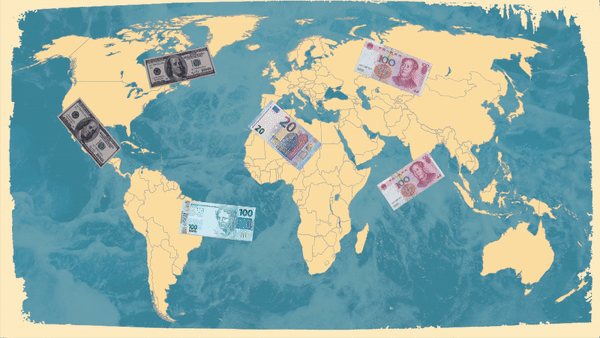September 30, 2022
What are remittances?
Some think of globalization mainly as cross-border flows of goods, services, ideas, and information. But crucial to globalization’s dynamism, and its powers of disruption, is the accelerating global movement of human beings. In fact, this is one of history’s oldest stories. People judge life “over there” to be safer and maybe more prosperous than life “over here,” and they hit the road in search of opportunities for richer lives and livelihoods.
And many of these people hope to help others. In every region of the world, migrants cross borders that separate poorer countries from wealthier ones in hopes of earning money they can share with those they’ve left behind, and the digital age has made it much easier for someone earning a relatively high wage abroad to send money back home in a matter of seconds. These financial flows are known as “remittances,” and they account for an increasingly large part of global economic activity. Small payments by large numbers of people add up: The World Bank estimated earlier this year that global remittances will reach $630 billion in 2022, a 4.2% annual jump.
The benefits of this process are widely shared. Remittances add wealth, opportunity, and therefore political stability to countries and families that need them. That’s especially important for poorer people in countries like India, Mexico, China, the Philippines, and Egypt, the world’s five largest remittance recipients in 2021. It’s even more important for countries like Lebanon, the Central Asian states, and small Pacific island nations, where remittance inflows make up from one-third to one-half of GDP.
They can provide a humanitarian lifeline for people trapped inside countries in trouble: Remittances once intended for Ukraine may now be flowing into the neighboring countries, particularly Poland, which is housing millions of Ukrainian refugees who need financial support. This boost for people in developing countries is never more important than in a time of rising global prices for food, fuel, and other basic necessities. Wealthy countries benefit too. Immigration increases the supply of labor by welcoming people who will, in some cases, take jobs that citizens of rich countries don’t want, putting downward pressure on production costs and retail prices.
But there are all kinds of disruptions that can break the virtuous circle of migration and remittances. Frictions arise when migrants create downward pressure on wages for some locals and social tensions when cultures clash. Fears of uncontrolled cross-border flows of people have created anxiety and anger in America and Europe. Wars and their fallout disrupt flows of money and people, a trend most obvious now in migrants from the Caucasus and Central Asia facing tougher economic conditions in Russia. The pandemic has also slowed migration in many regions, in some places dramatically. China’s “zero-COVID” policy, in particular, has made life much harder for those who would work in that country.
There is another potential source of remittance disruption: the cost of wiring money rises too. The global average cost of sending $200 reached 6% in the fourth quarter of 2021, according to the World Bank. That’s twice the level that the UN says will help poorer countries reach their development goals. It’s even more expensive to send money to Ukraine from some places and especially expensive to wire money to sub-Saharan Africa. Migration and the economic importance of remittances will surge in coming years as climate change, in particular, gives more people reason to move.More For You
Miami Mayor-elect Eileen Higgins points as she thanks her staff and supporters on the night of the general election, on Tuesday, Nov. 4, 2025.
Carl Juste/Miami Herald/TNS/ABACAPRESS.COM
A Democrat won Miami’s mayoral race for the first time in nearly 30 years. The Republican defeat will ring some alarms for the party – and their support among Latino voters.
Most Popular
Walmart’s $350 billion commitment to American manufacturing means two-thirds of the products we buy come straight from our backyard to yours. From New Jersey hot sauce to grills made in Tennessee, Walmart is stocking the shelves with products rooted in local communities. The impact? Over 750,000 American jobs - putting more people to work and keeping communities strong. Learn more here.
© 2025 GZERO Media. All Rights Reserved | A Eurasia Group media company.
